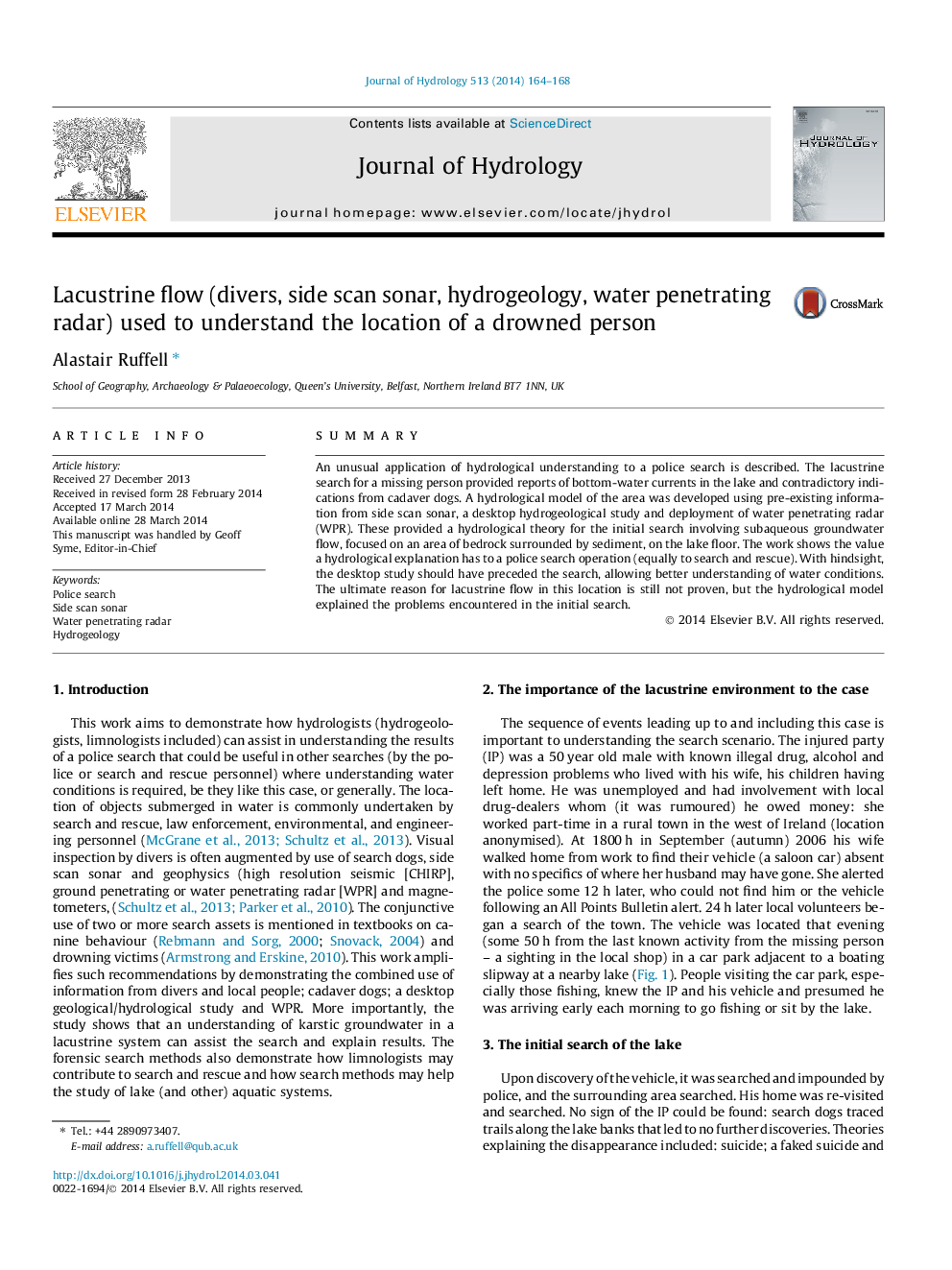| Article ID | Journal | Published Year | Pages | File Type |
|---|---|---|---|---|
| 6412728 | Journal of Hydrology | 2014 | 5 Pages |
â¢Uses integrated information from divers; side scan sonar; GPR.â¢Provides a hydrological model for bottom-water flow in a lake.â¢Shows the usefulness of hydrology in a police search.â¢Uses spatial interpolation of side scan sonar data and GPR on freshwater.
SummaryAn unusual application of hydrological understanding to a police search is described. The lacustrine search for a missing person provided reports of bottom-water currents in the lake and contradictory indications from cadaver dogs. A hydrological model of the area was developed using pre-existing information from side scan sonar, a desktop hydrogeological study and deployment of water penetrating radar (WPR). These provided a hydrological theory for the initial search involving subaqueous groundwater flow, focused on an area of bedrock surrounded by sediment, on the lake floor. The work shows the value a hydrological explanation has to a police search operation (equally to search and rescue). With hindsight, the desktop study should have preceded the search, allowing better understanding of water conditions. The ultimate reason for lacustrine flow in this location is still not proven, but the hydrological model explained the problems encountered in the initial search.
